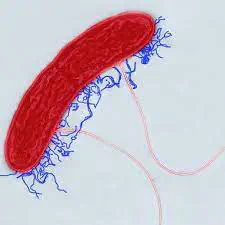 Image credit: [Lovley Lab]
Image credit: [Lovley Lab]Abstract
Geobacter species specialize in making electrical contacts with extracellular electron acceptors and other organisms. This permits Geobacter species to fill important niches in a diversity of anaerobic environments. Geobacter species appear to be the primary agents for coupling the oxidation of organic compounds to the reduction of insoluble Fe(III) and Mn(IV) oxides in many soils and sediments, a process of global biogeochemical significance. Some Geobacter species can anaerobically oxidize aromatic hydrocarbons and play an important role in aromatic hydrocarbon removal from contaminated aquifers. The ability of Geobacter species to reductively precipitate uranium and related contaminants has led to the development of bioremediation strategies for contaminated environments. Geobacter species produce higher current densities than any other known organism in microbial fuel cells and are common colonizers of electrodes harvesting electricity from organic wastes and aquatic sediments. Direct interspecies electron exchange between Geobacter species and syntrophic partners appears to be an important process in anaerobic wastewater digesters. Functional and comparative genomic studies have begun to reveal important aspects of Geobacter physiology and regulation, but much remains unexplored. Quantifying key gene transcripts and proteins of subsurface Geobacter communities has proven to be a powerful approach to diagnose the in situ physiological status of Geobacter species during groundwater bioremediation. The growth and activity of Geobacter species in the subsurface and their biogeochemical impact under different environmental conditions can be predicted with a systems biology approach in which genome-scale metabolic models are coupled with appropriate physical/chemical models. The proficiency of Geobacter species in transferring electrons to insoluble minerals, electrodes, and possibly other microorganisms can be attributed to their unique “microbial nanowires,” pili that conduct electrons along their length with metallic-like conductivity. Surprisingly, the abundant c-type cytochromes of Geobacter species do not contribute to this long-range electron transport, but cytochromes are important for making the terminal electrical connections with Fe(III) oxides and electrodes and also function as capacitors, storing charge to permit continued respiration when extracellular electron acceptors are temporarily unavailable. The high conductivity of Geobacter pili and biofilms and the ability of biofilms to function as supercapacitors are novel properties that might contribute to the field of bioelectronics. The study of Geobacter species has revealed a remarkable number of microbial physiological properties that had not previously been described in any microorganism. Further investigation of these environmentally relevant and physiologically unique organisms is warranted.
Supplementary notes can be added here, including code and math.